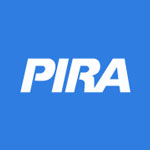 NYC-based PIRA Energy Group Reports that global oil stocks will draw less than normal in 4Q15, increasing the inventory excess. U.S. commercial crude stocks built the week ending September 25th to a new record high. In Japan, crude runs dropped, but imports stayed sufficiently low to contain crude stock change. Specifically, PIRA’s analysis of the oil market fundamentals has revealed the following:
NYC-based PIRA Energy Group Reports that global oil stocks will draw less than normal in 4Q15, increasing the inventory excess. U.S. commercial crude stocks built the week ending September 25th to a new record high. In Japan, crude runs dropped, but imports stayed sufficiently low to contain crude stock change. Specifically, PIRA’s analysis of the oil market fundamentals has revealed the following:
European Oil Market Forecast
Global oil stocks will draw less than normal in 4Q15, but the demand for inventory should set a floor for prices, limiting deterioration in the first half of the quarter. PIRA expects prompt crude prices to actually rally with stock draws later in the quarter but a sustainable rally will have to wait on physical balances substantially tightening in 2016. Gasoline cracks are declining seasonally. For middle distillates, high stocks will linger into next year capping diesel cracks. European refinery margins were the best in many years over the summer but are now coming off.
Bearish Storage Risks Ahead of Structurally Tighter Balances
Thanks to hot-weather-aided gas-fired electricity generation and tepid sequential production growth, concerns over storage congestion have diminished for the remainder of the injection season. Yet, bearish Henry Hub price risks persist in the near-term landscape; in particular, Producing Region stocks are still headed to an all-time end-October high.
Western Grid Market Forecast: September 2015
Strong cooling loads helped maintain California prices near July/August levels despite weaker gas prices. Mid-Columbia and Palo Verde markets both declined month-on-month. In the Northwest, below normal temperatures sapped late summer cooling loads while hydro output and net imports from BC held up well, supported by much above normal precipitation in the province. In the Southwest, seasonal cooling load declines reduced the call on less efficient generation and implied heat rates tumbled.
Coal Pricing Sinks Further on Softening Global Demand Growth Prospects
Physical coal prices again moved lower over the past month with weak macroeconomic data coming out of China, softness in the oil market, and generally unsupportive fundamentals. So long as China’s thermal coal imports decline year-on-year, it will be difficult for FOB Newcastle prices to rally. Both CIF ARA (Northwest Europe) and FOB Richards Bay (South Africa) prices also fell this past month, with slack demand from India driving the latter price lower. While Pacific Basin balances have the potential for tightening, weaker import demand in Europe and robust supply will keep Atlantic prices weak relative to Pacific.
European Electricity Markets Scorecard
The short-term pricing picture remains heavily tied to the French nuclear availability. Lower French nuclear availability adds a layer of risk, especially since colder weather is expected from the middle of the week. In addition, Belgium's nuclear output is now set to stay closer to 2014 levels, which is to say that we expect no change in the total Belgium net imports through the balance of the year. The increase in the NTC with Spain is also broadly bullish, but flows have been typically volatile in 4Q15, depending on Spanish wind conditions.
U.S. Crude Stocks Grind Higher W/W
U.S. commercial crude stocks built the week ending September 25th to a new record high, a level 167.3 million barrels over 2014 levels. Crude stocks had the highest surplus of the year. Demand growth has begun to sputter, with the latest four weeks of adjusted demand basically flat year-on-year. Gasoline demand and jet demand - possibly driven by accumulations for non-commercial uses - remain strong performers. Refinery turnarounds will continue to dominate crude balances for the next few weeks, although not enough to cause containment issues.
India Presses Forward with Gas Price Reduction
The Indian government reduced the price of the locally-produced natural gas by 18% for six months beginning Thursday (Oct-1), following a global slide in commodity prices. This is the second six-month revision since November when the government introduced a gas price formula linking it with international prices following demands from the industry that prices were too low to incentivize producers. Following the introduction of the formula, the prices went up by a third, but fell about 8% in the first revision in April.
Aramco Pricing Adjustments for November- Lower for Asia and the U.S., Europe Higher
Saudi Arabia's formula prices for November were released. Significant discounts were extended for Asian pricing, more modest cuts to the U.S., while European prices were mostly raised. The more generous terms to Asia suggest a desire to encourage more Asian refiner liftings, especially with imminent 2016 contract discussions. Pricing fundamentals in Asia suggested a less aggressive stance could have been taken. Refining margins in Asia had strengthened over the month, as had the economic incentive of running Saudi crude against competing grades.
Sluggish Tone of September U.S. Jobs Data Is Potentially Worrisome
The U.S. employment situation report for September was discouraging in key respects. The reported pace of job growth decelerated sharply in recent months, and the sluggishness was widespread across major industries. The unemployment rate was flat month-to-month, but a fall in the labor force participation rate was disappointing. As for GDP, the underlying pace of growth was probably decent in the third quarter, even though the drag from the trade and inventory sectors was substantial. Outside the U.S., August industrial production in Japan and Brazil had negative implications for growth.
Gas Regional Basis Monthly, September 2015
Mother Nature proved to be no match for gas market bears despite a valiant effort on her part in the form of record-breaking CDDs this month. Even so, many cash price markers, including Henry Hub are near, if not at, new lows for the year. And headwinds remain that could warrant even lower prices. In the South, the Producing Region set record highs for injections in both September and October last year, yet end-October storage still only reached 1,120 BCF — the lowest level since 2008. With September refills set to rival last year’s record, and stocks already nearing record highs, refills need to be upwards of 1 BCF/D lower than a year ago this October.
Asia-Pacific Oil Market Forecast
The global oil surplus has not materially diminished. PIRA’s 4Q15 balances now show a smaller commercial stock draw in the three major OECD markets than our previous estimate. The forecast draw is less than normal. Global economic weakness, centered in Asia, is a growing concern.
U.S. Ethanol Prices Increased During September
U.S. ethanol values rose during most of September as the market tightened, with inventories falling to the lowest level of the year. Manufacturing margins fell early in the month, though some improvement was achieved the last week of the month.
Pricing Parity Between Regions Strongly Implies More European Buying in 4Q/1Q
At this week's PIRA Client Seminar in New York, we will take an expansive look at the short and long-term outlook for LNG gas balances in the broader context of the global gas market. It is a story that will be making buyers smile and sellers looking for answers to difficult questions in the years to come.
U.S. July 2015 DOE Monthly Revisions
DOE released its final monthly July 2015 (PSM) U.S. oil supply/demand data today. July 2015 demand came in 430 MB/D higher than what PIRA had carried in its monthly balances. Compared to the DOE weeklies, total demand was lowered 253 MB/D. Total demand for July '15 versus July '14 (PSA) grew 696 MB/D, or 3.6%, which maintained similar growth from June. End-July total commercial stocks stood at 1,273.5 MMBbls, lower than the PIRA's assumption for end-July by 13.9 MMBbls, with product lower by 10.2 MMBbls. Compared to the weekly preliminary data, DOE lowered total commercial stocks 0.4 MMBbls. While both crude and product remain in excess relative to last year, the crude excess grew only slightly, while the product excess fell a more significant 8.6 MMBbls.
U.S. Coal Market Forecast
U.S. Consumer stocks of both natural gas and coal are poised to remain above comfortable target levels (especially for the latter), with downside weather risks a notable concern for this coming winter given prospects for continued El Niño conditions through early 2016. This poses downside price risks for gas, and thus coal over this coming winter.
Japan Data Show Storm and Holiday Impacts
Two weeks of data were reported due to the string of holidays September 21-23. Japanese crude runs dropped both weeks, but imports stayed sufficiently low to contain crude stock changes. Gasoline demand was disappointing driven lower by a typhoon and then displayed only modest holiday uplift, with stock builds for both weeks. Gasoil demand was much higher in the first week, and then sharply lower. Kerosene stocks drew marginally the first week, on continuing good seasonal demand and then compensated with a sizable stock build on lower demand. Refining margins are strong and supported by a late-season resurgence in gas cracks.
Weather-adjusted Balances Fueling Renewed Downward Price Momentum
In spite of a major leg-up from September CDDs, more than 30% above normal, PIRA’s balances show considerable weakness in weather-adjusted gas-fired electrical generation along with further weakness in the industrial sector.
Harvest Low Chatter
Every year around this time we hear the seasonal traders talking about harvest lows. Last year it happened on October 1st for both corn and soybeans, so the short memories are still intact.
International Coal Markets Scorecard
Coal prices continue to test new lows last week, with the temporary lifting of the Fenoco rail ban in Colombia and weaker oil prices pressuring the coal market lower. There has been a decided lack of bullish developments in this market, with very limited upside for demand (with considerable downside if China’s imports continue to implode), and not enough supply coming off the market. The gas and oil markets are not providing any support for coal prices either, with input costs for coal producing dragging valuations lower.
Global LPG Weekly Scorecard
Recent fundamentals developments in global LPG, including price issues, international arbitrage, trade flows, petrochemical margins, operating rates, spot and forward feedstock preferences, as well as the divergent regional weather influences.
European Economy
Europe experienced a constructive pace of economic growth during 3Q15, according to recent activity and confidence indicators. Credit data also improved markedly, as the European Central Bank’s aggressive policy easing has begun to bear fruit. But the economic outlook has become somewhat uncertain recently, due to several worrisome developments. The list of concerns includes possible negative spillover effects from emerging market weakness, volatility in financial markets, and declining long-term inflation expectations.
Global Equities Rebound W/W
Global equity markets largely advanced the week ending October 2nd. In the U.S. equity market, materials and energy led the way. They had previously been two of the biggest laggards. Housing was the weakest performer and declined. Internationally, all the tracking equity indices advance strongly, other than Japan, which was neutral. On the week, the international equity tracking indices outperformed the advances made in the U.S.
Harvest Lows?
PIRA is not in the business of calling harvest lows, but we certainly respect the seasonality of these markets. Corn has held up better than beans for the loud chorus promoting a bottom, but corn has most definitely benefited from a wheat market that has led the way on many occasions over the past two weeks. Corn remains stuck between soybean weakness and wheat strength, not a great trading environment.
U.S. Ethanol Output Up/ Stocks Down
U.S. ethanol production rose 6 MB/D the week ending September 25 to 943 MB/D, rebounding from a 19-week low. Inventories declined by 118 thousand barrels to 18.8 million barrels, slightly lower than stocks at the same time last year.
European Gas Price Scorecard
Russian exports in September were the second highest of the year and will move higher as the weather becomes colder. With the ruble weakened and prices falling in dollars, the incentive for Russia to export as much gas as possible is both a strategic and financial imperative. Russian gas prices are more or less dead even with spot prices, although some buyers seem to have a discount to current NGC and Gaspool levels.
S&P 500 Higher at Week End
The S&P 500 declined on a weekly average basis. However, a strong performance on Friday allowed the market to close higher on a Friday-to-Friday basis even in the wake of a weak employment report. Volatility was higher, while high yield credit (HYG) and emerging market credit weakened (higher yields). Overall, commodities declined again, but ex-energy was flat. With regard to currencies, many of the emerging Asia currencies continued to weaken against the U.S. dollar, as did the Brazilian real and British pound. The Russian ruble strengthened.
The information above is part of PIRA Energy Group's weekly Energy Market Recap - which alerts readers to PIRA’s current analysis of energy markets around the world as well as the key economic and political factors driving those markets.


 Last week DW renewables delegates attended the RenewableUK Annual Conference and Exhibition. In wake of the Global Offshore Wind Conference in June, expectations were for an upbeat demonstration of what the UK could provide in terms of world-leading technology and renewable solutions. However, the last few months have been somewhat tumultuous for our renewables industry, with the general feeling among attendees that the government had abandoned the industry at short-notice.
Last week DW renewables delegates attended the RenewableUK Annual Conference and Exhibition. In wake of the Global Offshore Wind Conference in June, expectations were for an upbeat demonstration of what the UK could provide in terms of world-leading technology and renewable solutions. However, the last few months have been somewhat tumultuous for our renewables industry, with the general feeling among attendees that the government had abandoned the industry at short-notice.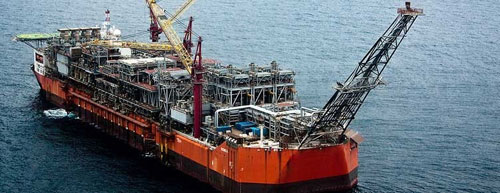 Shell Nigeria Exploration and Production Company Ltd (SNEPCo)
Shell Nigeria Exploration and Production Company Ltd (SNEPCo) Registration totals exceeded expectations as 13,500 global exploration and production professionals gathered at the
Registration totals exceeded expectations as 13,500 global exploration and production professionals gathered at the 
 GMC
GMC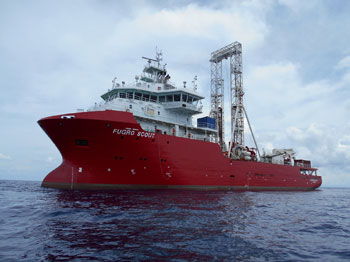 Fugro Scout
Fugro Scout ABS
ABS The American Heart Association has recognized
The American Heart Association has recognized  Aqueos Corporation
Aqueos Corporation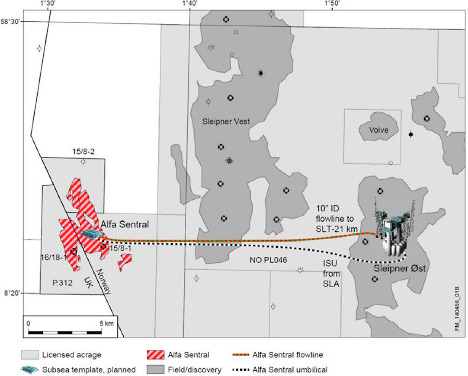 On 2 October 2015,
On 2 October 2015, 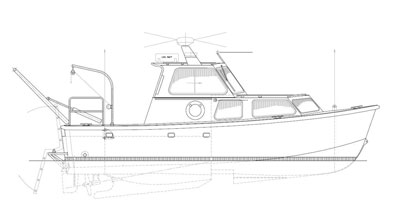 Willard Marine
Willard Marine NYC-based
NYC-based  The oil and gas industry is by nature one of the most challenging environments in the world, so a high level of business integrity is critical to safely keep operations up and running. As a result of its commitment to continuous improvement in the industry, Trelleborg’s offshore operation in England has been awarded an International Organization for Standardization (ISO) / Technical Specification (TS) 29001:2011 certification.
The oil and gas industry is by nature one of the most challenging environments in the world, so a high level of business integrity is critical to safely keep operations up and running. As a result of its commitment to continuous improvement in the industry, Trelleborg’s offshore operation in England has been awarded an International Organization for Standardization (ISO) / Technical Specification (TS) 29001:2011 certification.
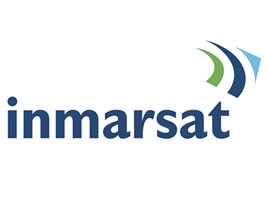 RigNet, Inc.
RigNet, Inc. Deep Down, Inc.
Deep Down, Inc. Oil prices have stabilized in the $45-50 range over the last month, however, performances of major oilfield stocks have continued to suffer. According to analysis undertaken by DW, decline of a further 8% has been seen through September, down 39% year-on-year.
Oil prices have stabilized in the $45-50 range over the last month, however, performances of major oilfield stocks have continued to suffer. According to analysis undertaken by DW, decline of a further 8% has been seen through September, down 39% year-on-year.